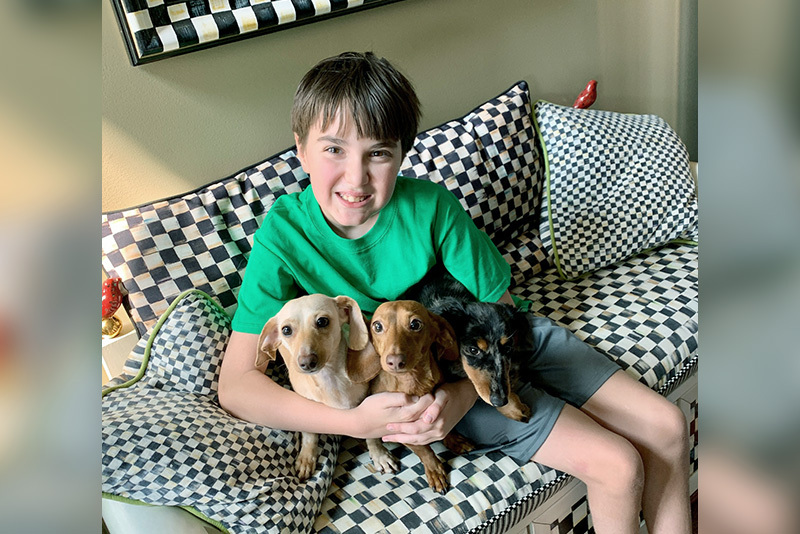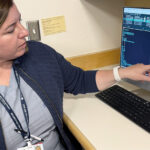Reaching his goals: Surgery helps CP soccer star shine

Cooper Veloudis loves soccer. At 12, he’s an avid player on CP Soccer’s New York team. This U.S. Soccer member organization provides opportunities for players with cerebral palsy (CP), stroke, or traumatic brain injuries and feeds into the U.S. Paralympics. He’s even kept up with daily practices during the pandemic via Zoom, rarely missing a session.
So it was exciting for Cooper when an acquaintance recently mistook his orthotic shoes for soccer cleats. “They just saw him as a kid, not a kid with CP,” says his older sister Jordan Wade.

When SDR isn’t the right choice
Indeed, Cooper has been keeping people guessing since he was born. The fifth of seven children, he was diagnosed with CP when he was about 2 years old. “His case was so mild that his doctors were baffled,” explains his mother, Tiffiney. “No one has ever really known how to treat him.”
Tiffiney and her husband, George, who are both in the medical field, have traveled from their home in Kentucky to New York for Cooper’s care for years. But as he got older, they noticed that his gait changed. Although he had been an early walker, now his knees and hips turned in and he tripped often. Worse, he was often in pain and developed stress fractures in his feet just from walking, which affected his ability to play soccer.
Cooper’s physicians in New York recommended selective dorsal rhizotomy (SDR). But the Veloudis family was hesitant: Although SDR can be effective at treating leg spasticity, it doesn’t address the orthopedic issues and isn’t right for every CP patient. “We didn’t feel confident that SDR was the best choice,” says Tiffiney.

A life-changing decision
Based on a recommendation by one of George’s colleagues, they decided instead to visit the Cerebral Palsy and Spasticity Center at Boston Children’s Hospital for a second opinion. They were already familiar with Boston Children’s: One of their daughters had previously undergone heart surgery there, and Cooper had seen Dr. Donna Nimec for physiatry care in the past.
Upon meeting the center’s co-director, Dr. Benjamin Shore, they knew they were in the right place. “By now, we understand the medical ins and outs of CP, and we could tell that he is amazing,” says Tiffiney. Dr. Shore recommended that Cooper undergo single event multilevel surgery. Specifically, he recommended bilateral femoral osteotomies, guided growth for knee flexion contractures, and soft tissue surgery around the knees and ankles.
This complex surgery has a prolonged recovery period but can greatly improve gait and related pain. Cooper had the procedure in October 2019 and began to feel more like himself by early 2020. “It was rough and there were a lot of tears,” admits Tiffiney. “But it was a life-changing decision.”

Celebrating milestones
More than a year later, Cooper isn’t just out of pain — he’s running up and down the soccer field. His family credits his physical therapy and daily soccer practices with his progress, along with Dr. Shore’s support. “He’s gone above and beyond in terms of answering our questions and checking in,” says Tiffiney.
A “hilarious” teen who loves playing video games and joking around, Cooper “always gives 110 percent to everything,” says Jordan. And his hard work and enthusiasm are paying off: Along with his teammates, he was recently named one of the 2020 U.S. Soccer Players of the Year with a Disability.
His parents and siblings are thrilled — and hope, with the right care, other families can celebrate similar milestones. “He’s an atypical kid and Boston Children’s was the first place to give us all the tools he needed to succeed,” says Tiffiney. “If you’re not sure about your child’s treatment, step outside your comfort zone and seek a second opinion.”
Learn more about the Cerebral Palsy and Spasticity Center.
Related Posts :
-

'Anything is possible': The sky’s the limit for teen with cerebral palsy
Jack Goldberg is on a mission. “I want other kids to see that if you work hard and put your ...
-

Simon's incredible progress after neonatal stroke
Simon Lieffers is “a very busy boy,” says his mother, Cara. At 2 1/2 years old, he’s obsessed with trucks and ...
-

Ask a sports medicine specialist: Why are ACL tears so common among female athletes?
When an athlete is sprinting after an opponent who suddenly stops or changes direction, their anterior cruciate ligaments (ACLs) make ...
-

Forging a path back to school after orthopedic trauma
Orthopedic trauma can force children to miss school, sometimes for an extended period. But even when patients have regained enough ...





